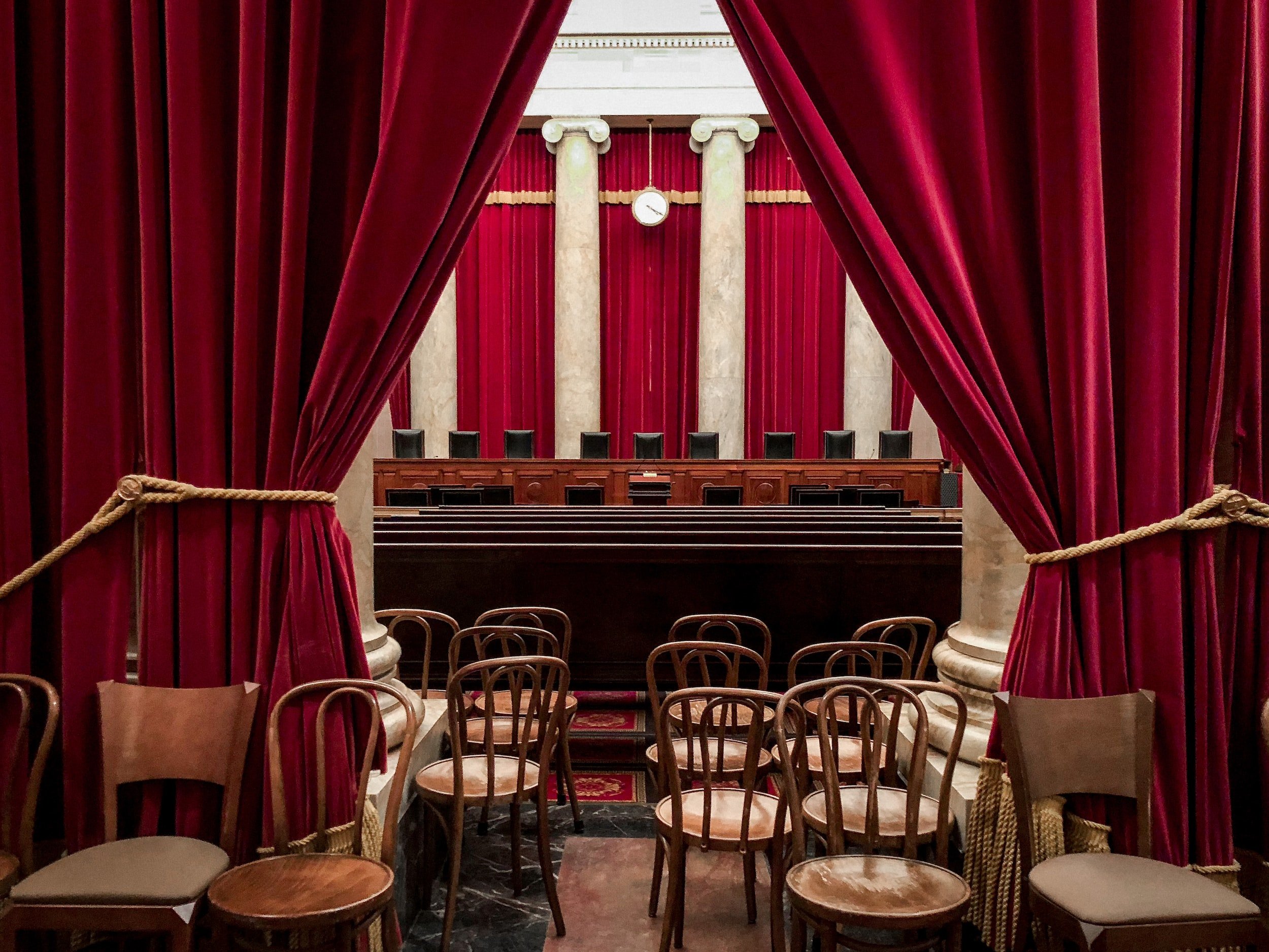New York Times v. U.S. (1971)
Constitutional Connection
1st Amendment
New York Times Company v. U.S. (1971) was a landmark decision of the Supreme Court of the United States on the First Amendment right of Freedom of the Press. Often referred to as the “Pentagon Papers” case, the landmark Supreme Court decision in New York Times Co. v. United States, 403 U.S. 713 (1971), defended the First Amendment right of free press against prior restraint by the government.
The New York Times reports on a case about The New York Times
Key Facts
In early 1971 Daniel Ellsberg, a RAND Corporation employee who had worked on the project, secretly made copies of the documents and passed them to reporters for the New York Times. On June 13, 1971, after several months of review, the Times began to publish these so-called “Pentagon Papers.”
After the first three installments were published, the Nixon administration, citing national security concerns, obtained a restraining order barring further publication of the Papers. When the Second Circuit Court of Appeals affirmed the order, the Times made an emergency appeal to the Supreme Court, which agreed to hear the case the next day (June 26). The Court issued its opinions on June 30; in all, the entire legal process had taken only 15 days.
In what became known as the "Pentagon Papers Case," the Nixon Administration attempted to prevent the New York Times and Washington Post from publishing materials belonging to a classified Defense Department study regarding the history of United States activities in Vietnam. The President argued that prior restraint was necessary to protect national security. This case was decided together with United States v. Washington Post Co.
“Only a free and unrestrained press can effectively expose deception in government…In revealing the workings of government that led to the Vietnam War, the newspapers nobly did that which the Founders hoped and trusted they would do.”
Big Question
Did the Nixon administration's efforts to prevent the publication of what it termed "classified information" violate the First Amendment?
Holding
6-3. Yes. In its per curiam opinion the Court held that the government did not overcome the "heavy presumption against" prior restraint of the press in this case. The Court ruled 6-3 in New York Times v. United States that the prior restraint was unconstitutional. Though the majority justices disagreed on some important issues, they agreed that “Only a free and unrestrained press can effectively expose deception in government…In revealing the workings of government that led to the Vietnam War, the newspapers nobly did that which the Founders hoped and trusted they would do.” Dismissing the claimed threat to national security, the Court continued, “The word ‘security’ is a broad, vague generality whose contours should not be invoked to abrogate the fundamental law embodied in the First Amendment.”
Impact of case
The landmark decision in New York Times v. United States remains one of the most important freedom of the press case in American history. The per curiam opinion clearly states that in any situation in which the government wishes to resort to censorship, it faces a difficult task in convincing the courts to issue the necessary legal orders. Despite this, many First Amendment advocates have criticized the decision. Although this case supports the right to publish, its impact is diluted by the failure of the Court to produce a clearly reasoned majority opinion. The Court’s fractured majority fails to say prior restraint may never be imposed; may be imposed only if the threat to national security can be proven to be real, serious, and immediate; or may be imposed if Congress provides sufficiently clear authorization and guidelines. Thus, far from being an unambiguous declaration of support for a free press, the decision leaves open the possibility of government censorship without specifying the conditions under which the First Amendment might permit it.
Connections
New York Times Co. v United States generally is regarded as a seminal victory for the free press in the United States. The First Amendment overrides the federal government's interest in keeping certain documents, such as the Pentagon Papers, classified.
Related cases:
Critical Questions
What is the constitutional principle central to this case?
Why did the Court find the prior restraint unconstitutional?
Had you been a member of the U.S. Supreme Court, how would you have ruled in NY Times v. U.S.?
The holding in this case makes our press more free. Explain whether it makes our country more safe?
Get AP exam-ready with diagnostic tests, online review games, test review sheets, practice quizzes, full-length practice exam, and self-guided writing workshops. We'll make studying a breeze.
“Congress shall make no law respecting an establishment of religion, or prohibiting the free exercise thereof; or abridging the freedom of speech, or of the press; or the right of the people peaceably to assemble, and to petition the Government for a redress of grievances.”






















